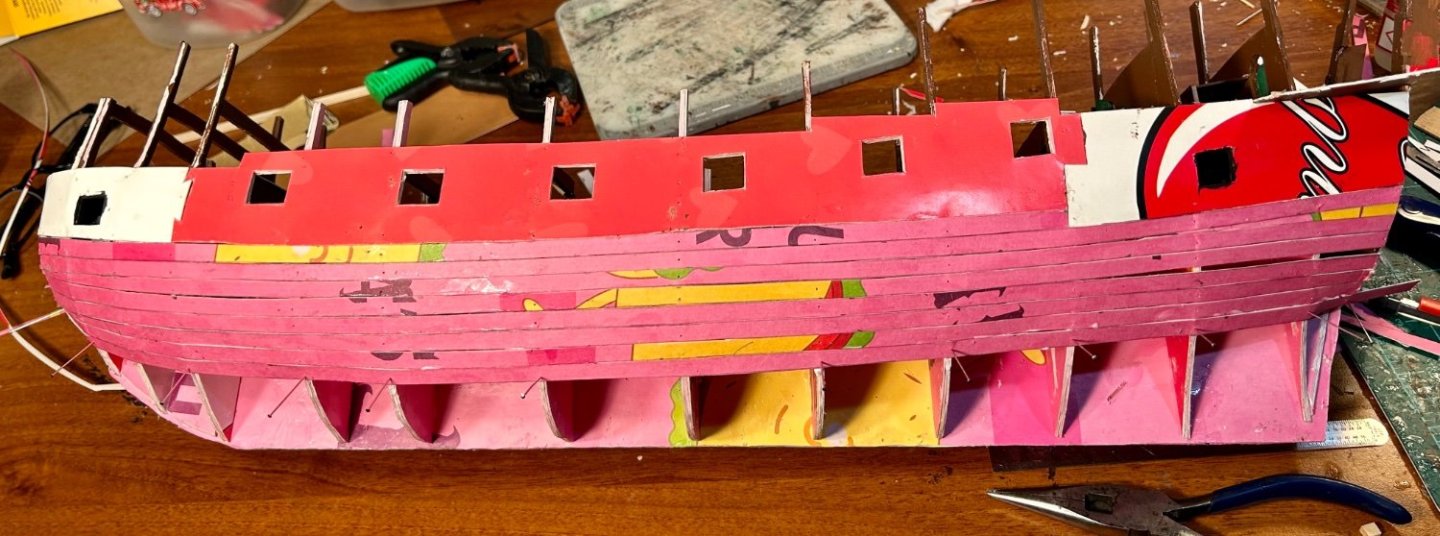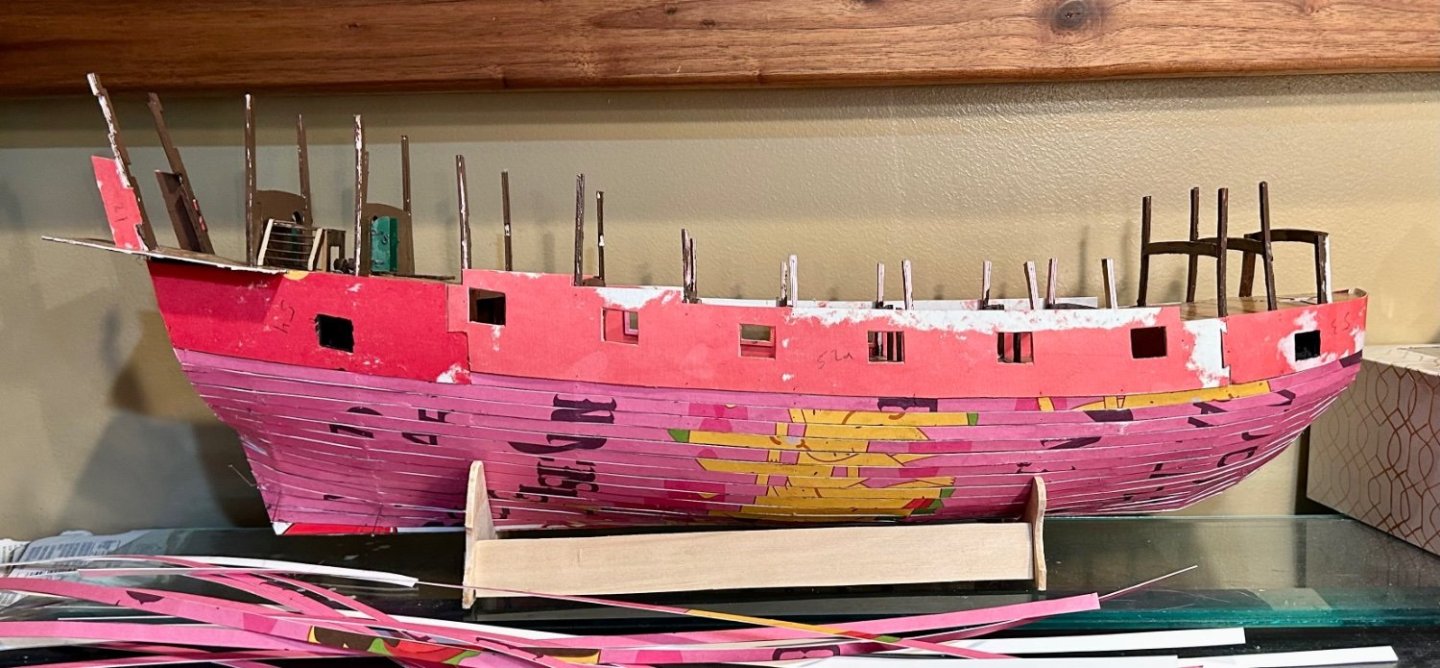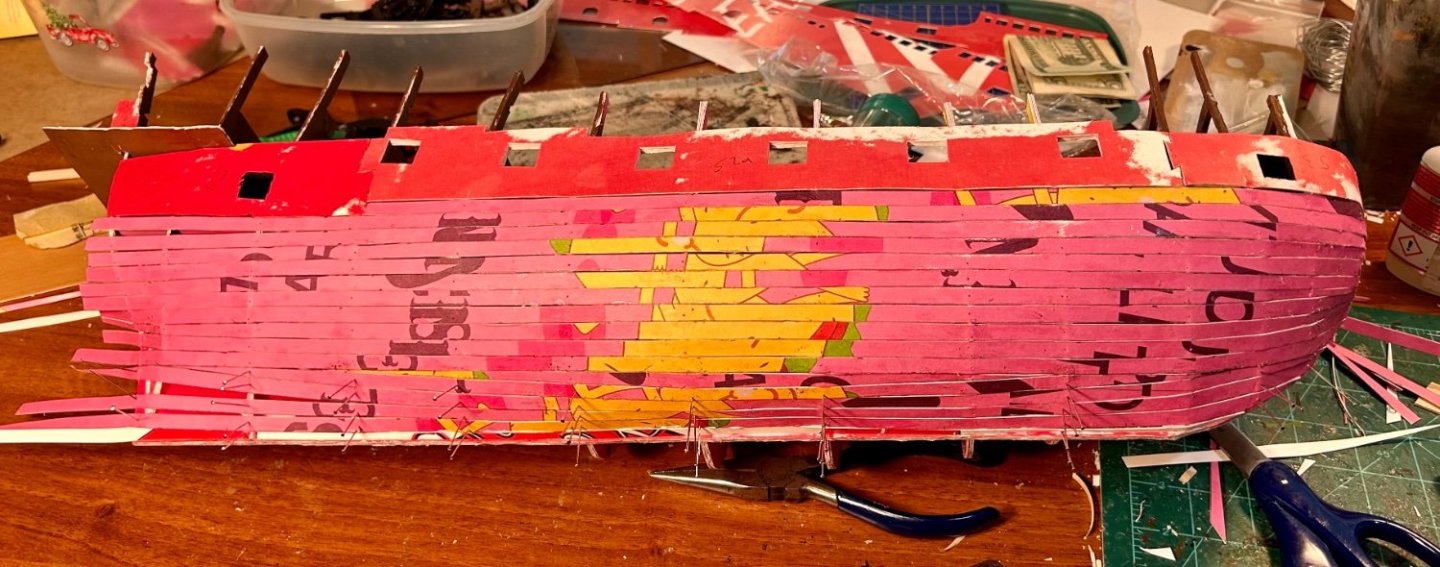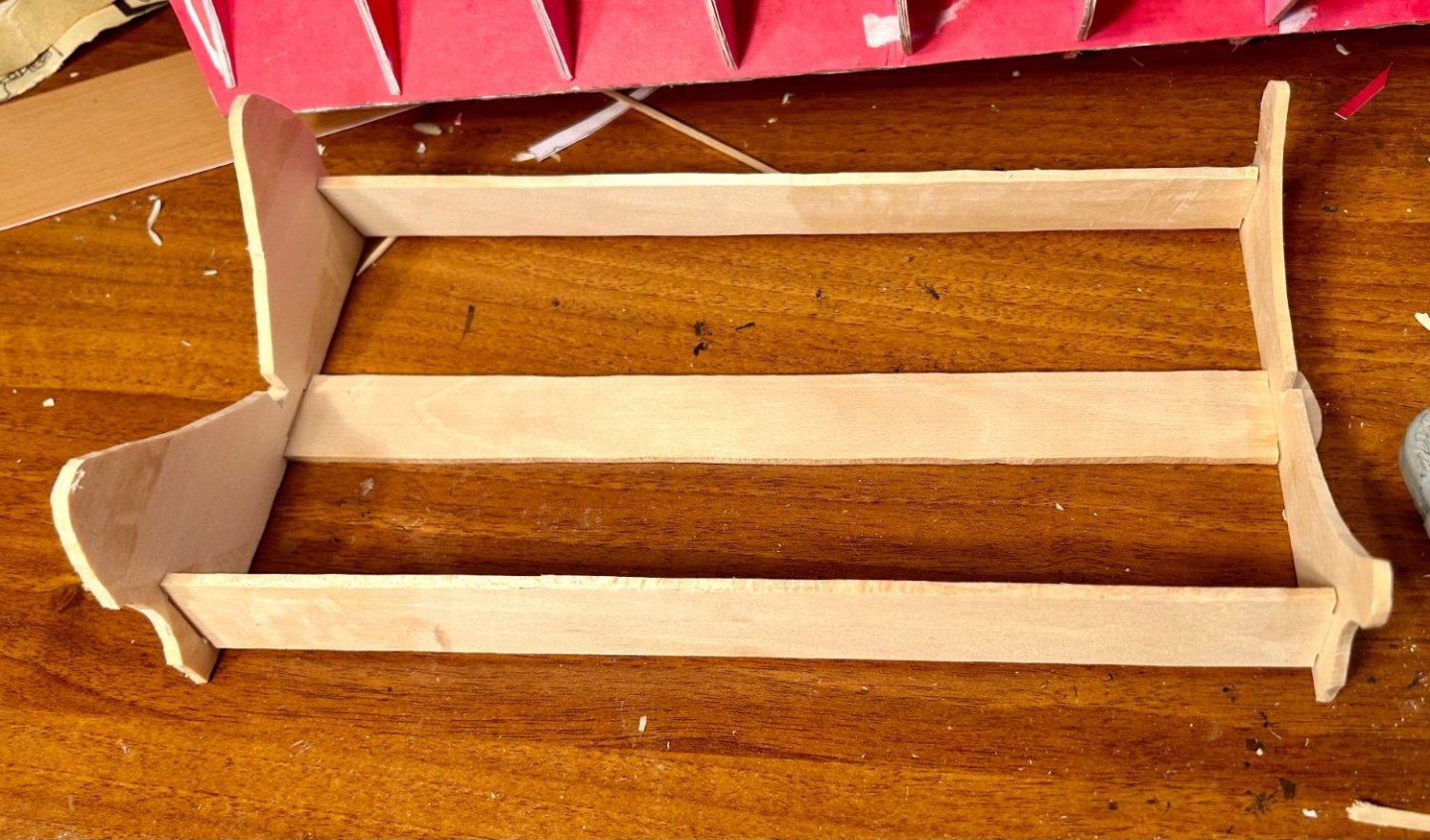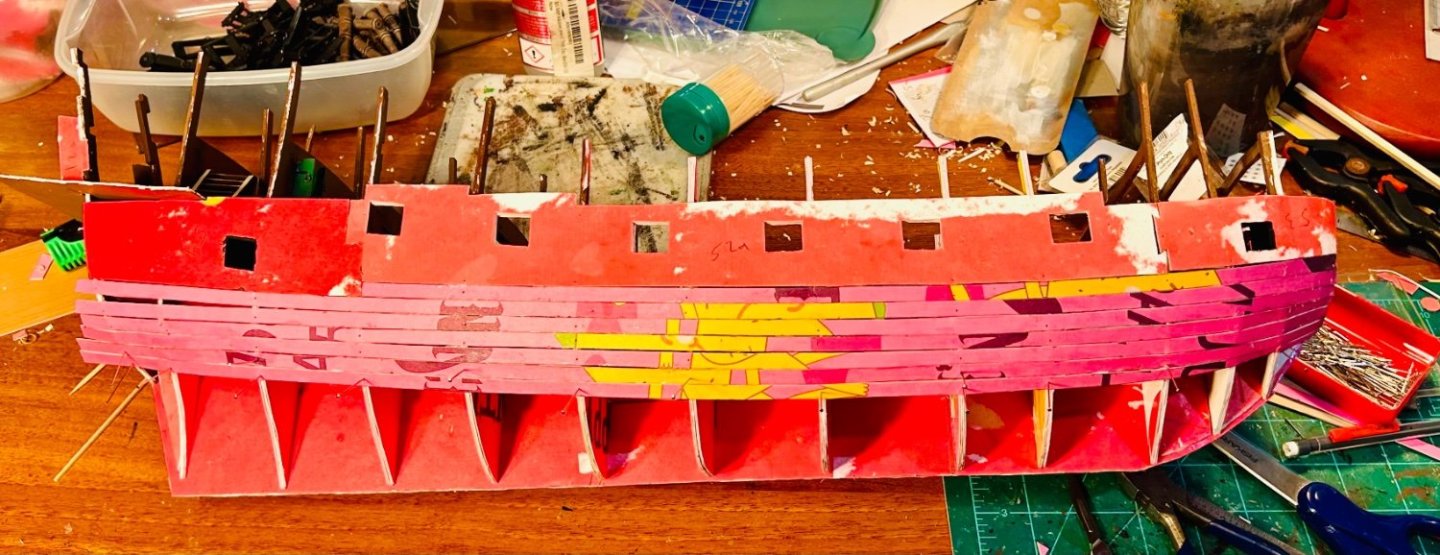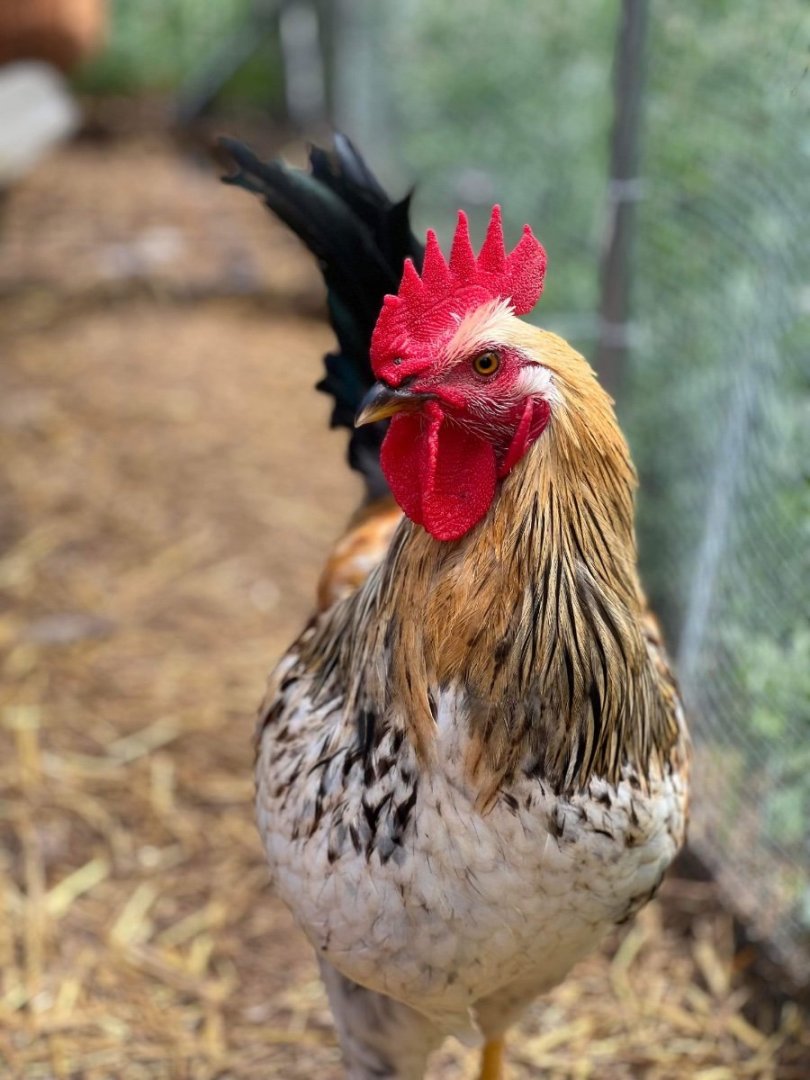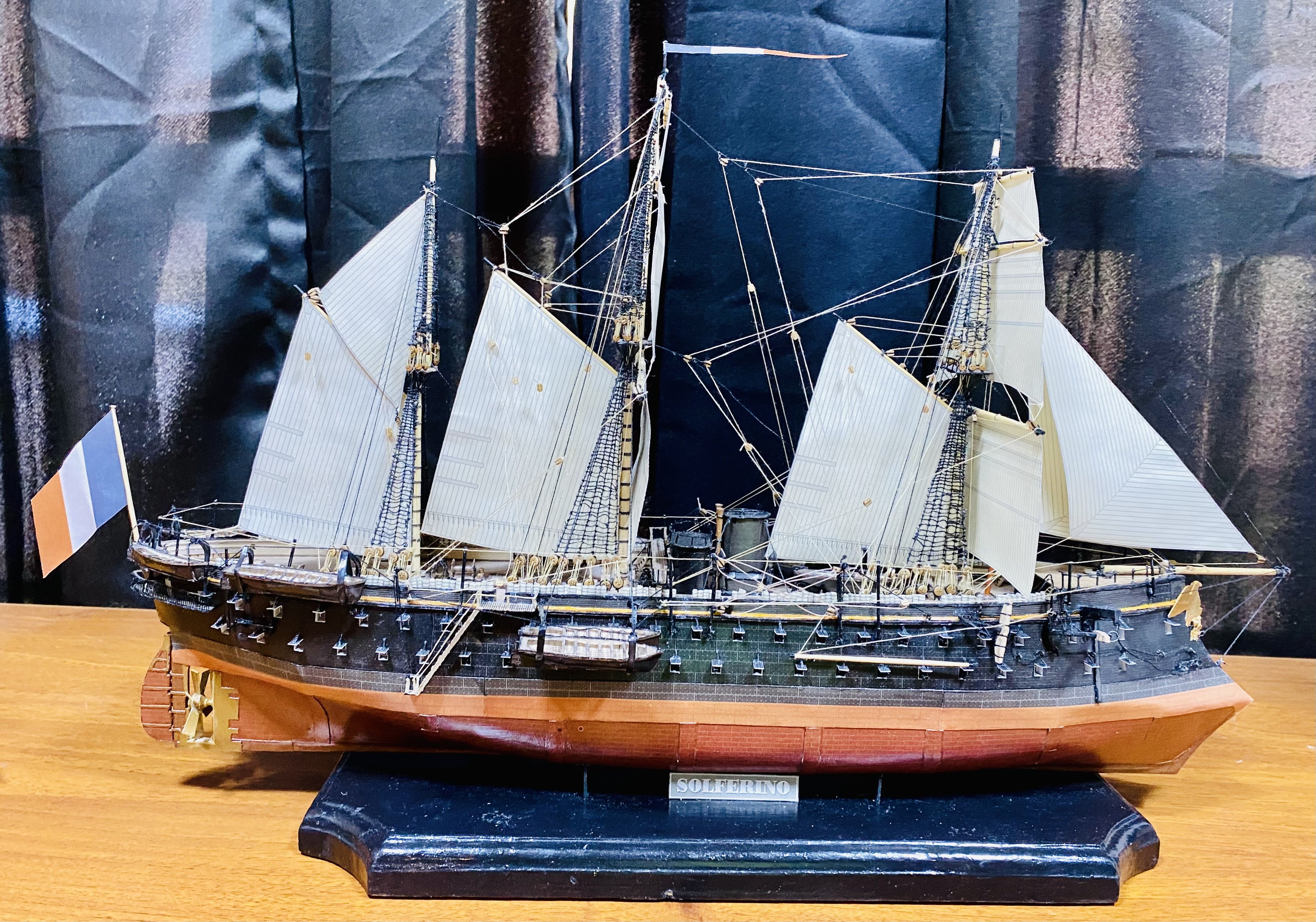
GrandpaPhil
NRG Member-
Posts
6,143 -
Joined
-
Last visited
Content Type
Profiles
Forums
Gallery
Events
Everything posted by GrandpaPhil
-
What plastic ship kits have you done?
GrandpaPhil replied to Broadsides's topic in Plastic model kits
My plastic builds include the Heller La Reale, the Heller Amphitrite, the Encore Olympia, a 1/350 Arleigh Burke, a 1/144 Gato, a 1/350 Independence (the LCS) and a 1/720 Carl Vinson. When I was a teenager, I made a try at the Revell 1/96 Constitution and later tried it again while in college. I never finished either one. Maybe I’ll make a Constitution out of card one of these years. -
That’s cool!
-
Jan, Your models are very impressive. I have learned a lot from them. I will add a second layer of planking. Once the first layer is done, the model will be getting a lot of putty and then sanded smooth, before being sealed, to give the second layer a solid base to adhere to. The second layer will be 1mm card, with contact paper to give them a wood grain texture, cut into individual “planks”. That will then be painted.
-
Lol, yep. Those cards were a good find for me. I could not have resold them, so them being the right type and size of card for model making worked out really well. Plus, we got the pallet right before Valentine’s Day (they were the 2022 Valentine’s cards, not the 2023 ones), so the timing worked out for the card giving to the wife, too, lol. On a serious note, planking with card is much faster than planking with wood. Card works quicker and no heat or water is required. Vertical planking actually seems to work much better, but I wanted to try conventional planking just to see how it played out. I’ll give a full opinion after I see how it works out. I should have made full filler blocks for the bow, but it is too late now.
-
Welcome!
-
Welcome!
-
Welcome!
-
COVID is not any fun. I hope you feel better soon. The models look fantastic!
- 12 replies
-
- Muleta de Seixal
- Seahorse
-
(and 1 more)
Tagged with:
-
Thank you very much, Steven! This is the hardest part for me, so I am pleased to see it shaping up. Meriadoc, It is a taco and is part of an oversized Valentine’s card that says, “Let’s taco about us” I do resale on the side, and found a bunch of those obnoxiously oversized Valentine’s cards on a liquidation pallet. They were the perfect thickness (approximately 1 mm) and size (24” by 36”) for model making. Needless to say, I promptly gave one to my wife (which she also promptly gave back to me to use for model making as it was too large to keep) and then put the rest of them in my model making supplies.
-
Thank you very much! One of the nice things about card is that there is no water or steaming involved, so it goes much quicker. Plus, you just preshape the planks as you go. Card has become one of my preferred ways to build. The Prince de Neufchatel, which was my first card ship and scratch build, was one of those things in which I just wanted to see if I could do it. Once I got the hull built, I realized that it wasn’t any different than any other ship model from that point on. So, I kept rolling. This is my fourth ship built in card, third scratch build, but the first one that involved building from plans for a wood model, and having to adjust accordingly.
-
Yes, Roland is a good rooster. He crows in the morning after he hears me or my wife moving around. If he crows any other time it is to let me know that something is wrong. I’m working on the cradle right now to give Revenge a stable place to sit because the planking has progressed far enough that it needs a solid base now.
-
Here is the trireme: IMG_3431.tiff It won’t embed normally because it is a .tif file, so it is not compressed. It is courtesy of the French Ministry of Defense.
- 290 replies
-
- Quinquereme
- Finished
-
(and 1 more)
Tagged with:
-
This is going to be an awesome project! I have a plan from the French Ministry of Defense for a Roman Trireme, drawn in 1861, in .tif format if you would like it.
- 290 replies
-
- Quinquereme
- Finished
-
(and 1 more)
Tagged with:
About us
Modelshipworld - Advancing Ship Modeling through Research
SSL Secured
Your security is important for us so this Website is SSL-Secured
NRG Mailing Address
Nautical Research Guild
237 South Lincoln Street
Westmont IL, 60559-1917
Model Ship World ® and the MSW logo are Registered Trademarks, and belong to the Nautical Research Guild (United States Patent and Trademark Office: No. 6,929,264 & No. 6,929,274, registered Dec. 20, 2022)
Helpful Links
About the NRG
If you enjoy building ship models that are historically accurate as well as beautiful, then The Nautical Research Guild (NRG) is just right for you.
The Guild is a non-profit educational organization whose mission is to “Advance Ship Modeling Through Research”. We provide support to our members in their efforts to raise the quality of their model ships.
The Nautical Research Guild has published our world-renowned quarterly magazine, The Nautical Research Journal, since 1955. The pages of the Journal are full of articles by accomplished ship modelers who show you how they create those exquisite details on their models, and by maritime historians who show you the correct details to build. The Journal is available in both print and digital editions. Go to the NRG web site (www.thenrg.org) to download a complimentary digital copy of the Journal. The NRG also publishes plan sets, books and compilations of back issues of the Journal and the former Ships in Scale and Model Ship Builder magazines.



